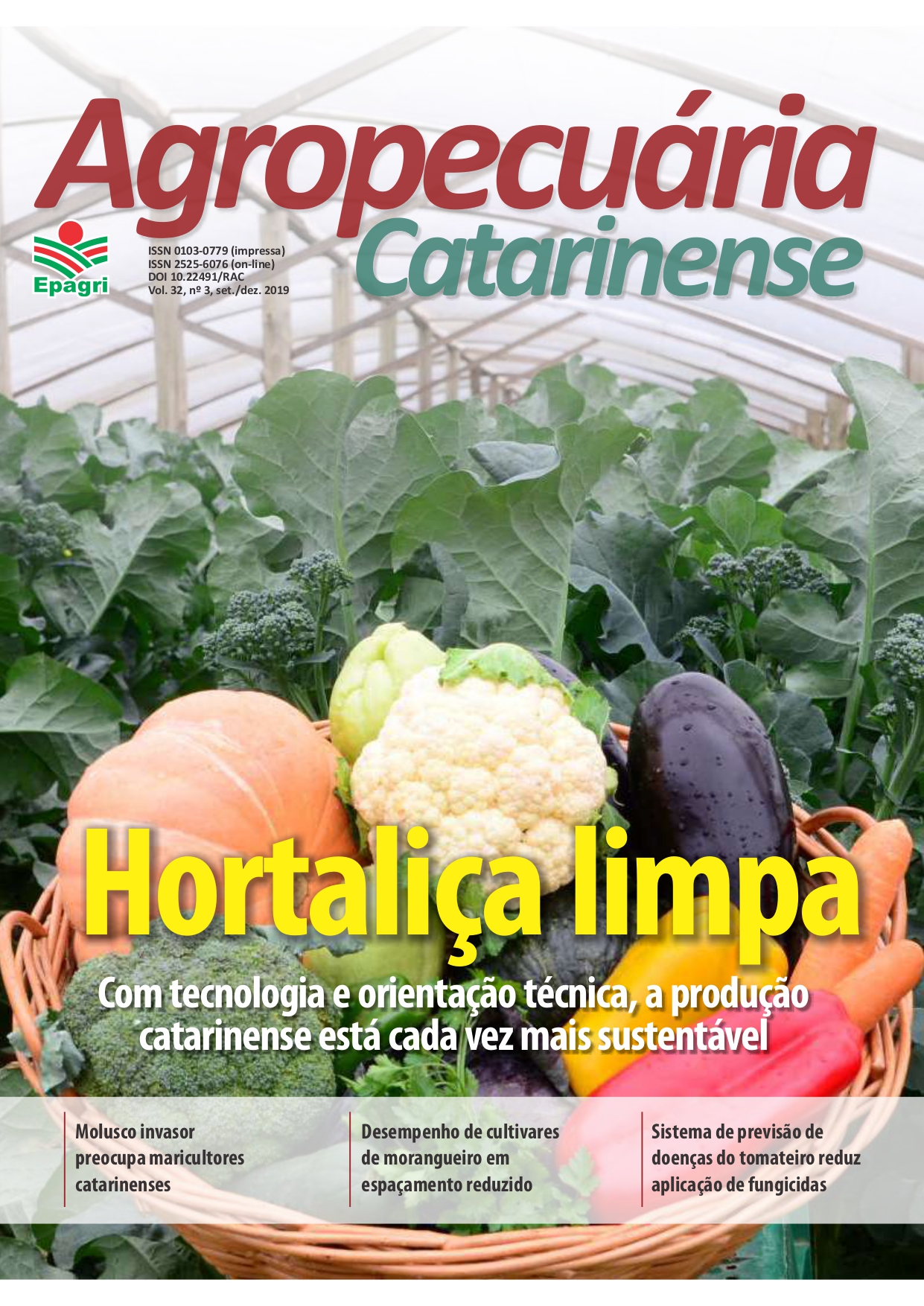Avaliação de sistemas de previsão para a septoriose do tomateiro tutorado em Caçador, SC, Brasil.
Palabras clave:
Solanum lycopersicum, sistema de alerta, TomCast, Septoria lycopersici, método de controle.Resumen
A septoriose, causada pelo fungo Septoria lycopersici é uma das mais importantes doenças do tomateiro tutorado em Caçador, SC, Brasil. A doença é geralmente controlada pela aplicação preventiva de fungicidas. Experimentos de campo foram realizados com o objetivo de avaliar sistemas de previsão desta doença; um com base no sistema TomCast (10, 15 e 20 valores de severidade – VSD), outro pelo período de molhamento foilar (limiar ≥ 12 horas), ambos comparados com a aplicação semanal de fungicidas. O TomCast utiliza a duração do molhamento foliar e a temperatura média deste período para calcular o valor de severidade diário da doença (VSD). Não houve diferença significativa entre o tratamento semanal e os previsores em relação à produtividade, severidade final, área abaixo da curva do progresso da doença e taxa de infecção aparente (r). Entretanto, com o tratamento 20-VSD houve redução de 12,5 a 70% das pulverizações em relação ao tratamento semanal.
Métricas
Publication Facts
Reviewer profiles N/D
Author statements
- Academic society
- Epagri - Revista Agropecuária Catarinense
- Editora:
- Empresa de Pesquisa Agropecuária e Extensão Rural de Santa Catarina - Epagri
Descargas
Publicado
Cómo citar
Número
Sección
Licencia
Derechos de autor 2019 Revista Agropecuária Catarinense

Esta obra está bajo una licencia internacional Creative Commons Atribución 4.0.





